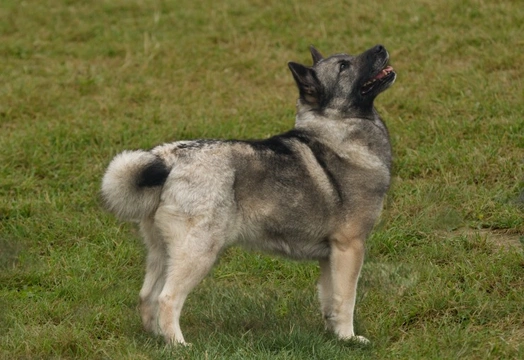
5 Interesting Facts About the Norwegian Buhund Dog
The Norwegian Buhund is a charming spitz-type dog breed that remains somewhat rare in the UK but is beloved in its native Norway. Known for its thick double coat, small erect ears, and curled tail, the Buhund thrives in cold climates and has adapted over centuries to perform herding and guarding tasks on farms.
The breed’s history stretches back to before the Viking era, with evidence found in Viking graves alongside their families, pointing to an ancient and respected heritage. Originally bred to herd livestock on Norwegian farms, these dogs also took on versatile roles such as hunting and guarding, underscoring their intelligence and adaptability.
If you are curious about welcoming a Norwegian Buhund into your family or just want to know more, here are five interesting facts to deepen your appreciation of this spirited and affectionate breed.
1. Viking Origins and Rich History
The Norwegian Buhund’s ancestors lived in Scandinavia as early as 900 A.D., evidenced by findings in Viking burial sites like the Gokstad ship grave where canine remains similar to Buhunds were discovered. They journeyed with Norse Vikings during their raids and explorations, spreading across Europe as cherished companions. This deep history embeds a sense of tradition and enduring resilience in the breed.
2. Versatile Working Roles Beyond Herding
While primarily herders, Norwegian Buhunds also excelled in other farm roles such as guarding property and hunting small game. Their intelligence, vigilance, and work ethic made them indispensable to Norwegian farmers. Today, many Buhunds continue to work, while others enjoy active lives as family pets and canine sport competitors.
3. Distinctive Coat and Grooming Needs
The breed sports a dense, double-layered coat designed for protection against harsh weather. Coat colours are typically black or wheaten, with possible white markings or black masks adding to their unique charm. Unlike many spitz breeds, the Norwegian Buhund’s coat is relatively low-maintenance, requiring brushing a couple of times a week and occasional bathing to prevent matting and manage seasonal shedding.
4. Intelligent and Trainable, With a Lively Personality
Norwegian Buhunds are bright, quick learners who respond well to experienced, consistent training methods. Their alertness and playfulness make them delightful companions, though they can be vocal and alert their owners to any unusual activity. Early socialisation and structured training are important to channel their high energy positively and avoid the development of undesirable behaviours.
5. Ideal for Active Families and Canine Sports
Because of their working heritage and lively nature, Norwegian Buhunds love outdoor exercise and mental challenges. They thrive when engaged in dog sports such as agility, obedience, and herding trials. For owners considering a Buhund as a pet, regular long walks and fun activities will fulfil their exercise and stimulation needs, ensuring a happy, balanced dog.
When seeking a Norwegian Buhund puppy, it is essential to find reputable breeders who prioritise health, temperament, and responsible breeding practices. Avoid impulsive buying and consider adoption where available to promote ethical pet ownership.
To summarise, the Norwegian Buhund offers a wonderful blend of history, intelligence, affectionate temperament, and versatility for those able to commit to an active pet lifestyle. Their unique heritage from Viking times and loyal companionship make them truly special dogs worthy of consideration.



